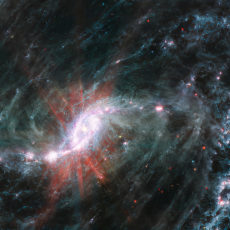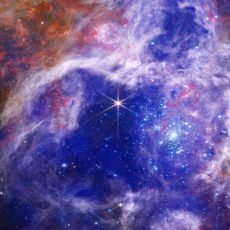
NASA / ESA’s Hubble Space Telescope observes a massive galactic sea creature located over 700 million light-years from Earth. JO206 is a colorful star-forming disk surrounded by a pale, luminous cloud of dust, while a cluster of bright stars with crisscross diffraction spikes stands out in the foreground against an blotchy black backdrop.

At the bottom right of this image, you can see long tendrils of bright star formation trail the disk of jellyfish galaxy JO206, similar to how their real-life counterpart trails tentacles behind them. Their tendrils are formed by the interaction between galaxies and the intra-cluster medium, a tenuous superheated plasma that pervades galaxy clusters.
- BRIGHT, SHARP VIEWS ANYWHERE: Unlike many beginner telescopes, this quality refractor features fully coated glass lenses and a 70mm aperture for...
- PERFECT FIRST TELESCOPE FOR BEGINNERS: Designed for adults and kids to enjoy together, this beginner-friendly telescope sets up in minutes and...
- EASY NO-TOOL SETUP: No complicated assembly or tools needed. The full-height tripod and telescope tube set up in seconds and pack neatly into the...
Surprisingly, Hubble revealed that there are no striking differences between star formation in the disks of jellyfish galaxies and star formation in their tentacles, which suggests the environment of newly formed stars has only a minor influence on their formation,” according to NASA.







